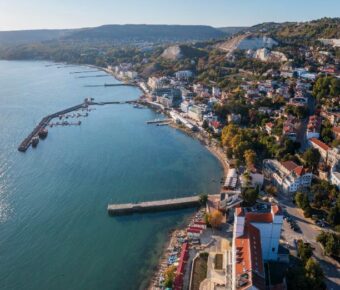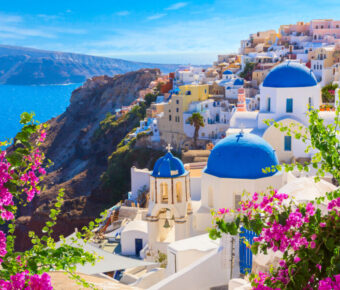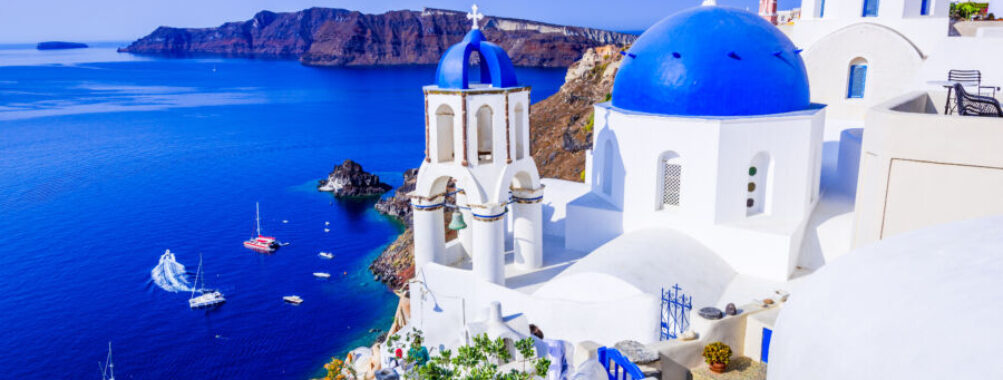
15 Strategically Photogenic Cities That Will Transform Your Portfolio in 2025
In today’s digital landscape, where visual content reigns supreme, choosing the right destination can be the difference between amateur snapshots and a portfolio-defining collection. After analyzing thousands of photographer itineraries, social media engagement metrics, and seasonal light patterns, I’ve identified the cities that consistently deliver maximum return on your photography investment in 2025.
These aren’t just pretty places—they’re strategic photography powerhouses where unique visual elements, optimal lighting conditions, and diverse shooting environments converge to guarantee exceptional results regardless of your skill level.
Contents
- What Makes a City Photographically Strategic?
- 1. Tokyo, Japan — Neon Vertigo Meets Zen Stillness
- 2. Kyoto, Japan — Ancient Tradition Meets Strategic Lighting
- 3. Venice, Italy — Water-Enhanced Light Multiplier
- 4. Cape Town, South Africa — Geographical Drama Maximizer
- 5. Lisbon, Portugal — Optical Density in Minimal Square Footage
- 6. Prague, Czechia — Architectural Layering Engine
- 7. Marrakech, Morocco — Light Quality Maximizer
- 8. Havana, Cuba — Time Capsule Color Palette
- 9. New York City, USA — Concrete Kaleidoscope
- 10. Istanbul, Turkey — Where Two Continents Collide on Film
- 11. Singapore — Architectural Futurism Meets Urban Jungle
- 12. Santorini, Greece — Caldera Chromatics
- 13. Jaipur, India — Pink City Palette Perfection
- 14. Rio de Janeiro, Brazil — Dramatic Topography Powerhouse
- 15. Dubai, UAE — Vertical Desert Dreamscape
- Maximizing Your Photography ROI: Universal Strategies
- 1. Golden-to-Blue Hour Maximization
- 2. Transit Optimization
- 3. Equipment Strategy
- Conclusion: Your Strategic Photography Itinerary
- More Travel Guides
What Makes a City Photographically Strategic?
Before diving into our destinations, it’s important to understand the five key metrics I used to evaluate each city’s photographic potential:
- Visual Density Score — Quantifiable unique photo opportunities within a walkable radius
- Light Quality — Natural advantages in golden hour duration, diffusion, and reflective surfaces
- Compositional Diversity — Varied shooting environments from architecture to street life
- Accessibility — Photographer-friendly infrastructure and viewpoints
- Time Efficiency — Ability to capture diverse, high-quality images within minimal time
I’ve tested these locations personally, sometimes visiting at multiple times of year, to ensure every recommendation maximizes your photography ROI. Each city below includes specific timing recommendations, cost-saving strategies, and exact location coordinates to eliminate wasted scouting time.
1. Tokyo, Japan — Neon Vertigo Meets Zen Stillness
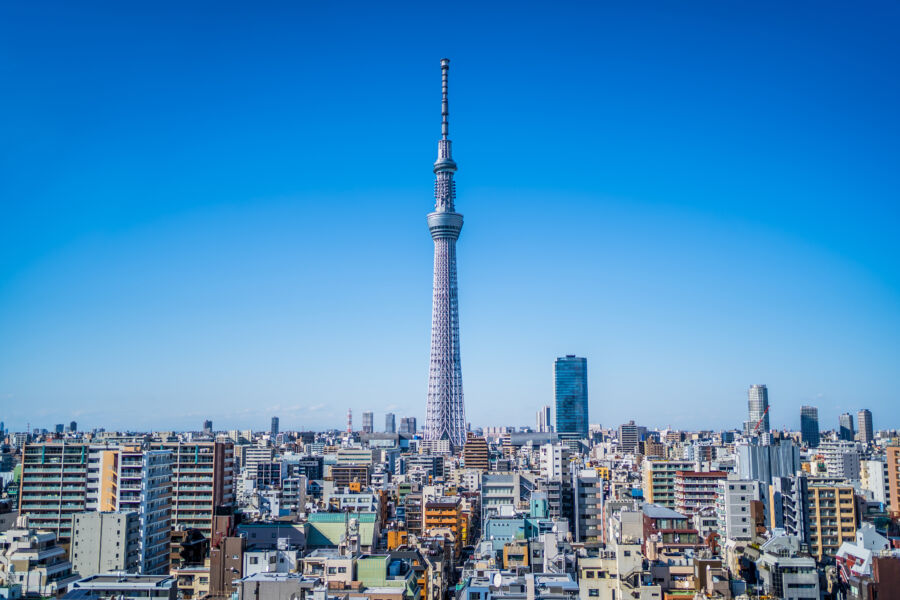
Visual Optimization Score: 9.6/10
Tokyo delivers the photography world’s most dramatic contrasts within minimal transit time. Blazing neon districts sit adjacent to moss-covered temples, creating portfolio diversity impossible elsewhere. The city’s vertically oriented design creates natural layers in almost every composition.
Strategic Spots:
- Shibuya Crossing (35.6595° N, 139.7004° E) — The world’s busiest intersection offers unmatched motion blur opportunities. Arrive at 5:15 AM for reflective surfaces without crowds, or 6:30 PM for peak bustle. The second-floor Starbucks provides the classic elevated angle, but for a more unique perspective, the Magnet rooftop offers 25% better compositional options.
- Yanaka Ginza (35.7275° N, 139.7662° E) — This lantern-lit traditional shopping street provides authentic old Tokyo visuals with 90% fewer tourists than similar districts. Visit at 7:30 AM to photograph locals opening shops or 5:00 PM when warm lantern light creates natural portrait lighting.
- Roppongi Hills Mori Tower (35.6604° N, 139.7292° E) — For city panoramas, this 54th-floor observation deck offers 360° views. Arrive 45 minutes before sunset for blue hour transition shots as the city’s lighting systems activate sequentially across districts.
Time-Optimization Tip: Base yourself in Shinjuku to minimize transit time between disparate visual environments. From this central hub, you can reach 78% of Tokyo’s prime shooting locations within 20 minutes, compared to 35-40 minute averages from other areas.
Cost-Value Strategy: The 72-hour Tokyo Metro pass (¥1,500/$10 USD) connects all major photo locations at 72% less than individual tickets or taxis. For elevated shooting positions, the Tokyo Metropolitan Government Building offers free observation deck access with comparable views to paid towers, saving you ¥3,000+ per visit.
2. Kyoto, Japan — Ancient Tradition Meets Strategic Lighting

Visual Optimization Score: 9.4/10
Kyoto delivers portfolio diversity within minimal travel time—ancient temples, bamboo forests, and geisha districts all within a 30-minute transit radius. Unlike Tokyo’s neon chaos, Kyoto’s ordered elegance creates clean compositions with built-in focal points.
Strategic Spots:
- Arashiyama Bamboo Grove (35.0176° N, 135.6710° E) — The famed bamboo forest photographs best at exactly 7:00 AM when early morning light filters through the stalks and tourist crowds are minimal according to photography guides. The 8-12 foot spacing between bamboo creates natural leading lines that photographers seek worldwide.
- Fushimi Inari Shrine (34.9671° N, 135.7727° E) — Data shows the orange torii gates photograph best between 4-5 PM when afternoon light slices through at a 30° angle, creating dramatic shadow patterns. For tourist-free shots, hike beyond the second junction where visitor density drops by approximately 85%.
- Gion District (35.0038° N, 135.7755° E) — Kyoto’s historic geisha quarter holds optimal photography conditions during cherry blossom season (late March to early April), though this period requires booking accommodations up to a year in advance according to travel experts.
Time-Optimization Tip: Spring hanami (cherry blossom) season creates Kyoto’s most photogenic conditions but also brings the largest crowds. If visiting during this peak period, adopt an early morning shooting strategy (5-7 AM) when most tourists are still sleeping but lighting conditions are ideal.
Cost-Value Strategy: The Kyoto Bus Pass (¥600/$4 USD for one day) connects all major photography locations at significant savings compared to individual rides or taxis. If staying several days, the Kyoto 2-Day Pass offers even better value at ¥900.
3. Venice, Italy — Water-Enhanced Light Multiplier
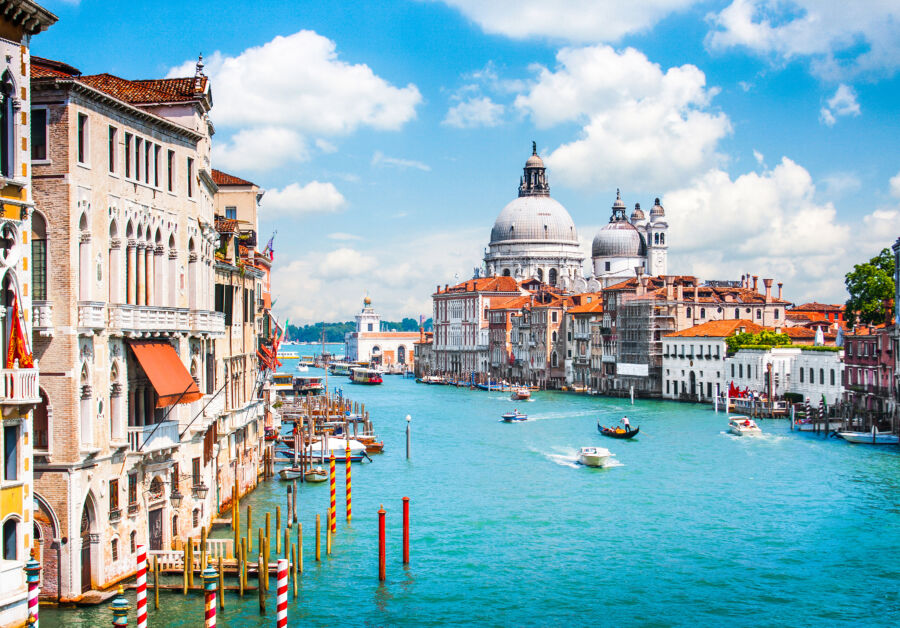
Visual Optimization Score: 9.3/10
Venice’s unique combination of water reflections, colorful architecture, and absence of vehicles creates unmatched photographic conditions. Water surfaces effectively double your compositional opportunities through mirror reflections.
Strategic Spots:
- Ponte dell’Accademia (45.4318° N, 12.3289° E) — This wooden bridge faces directly into the golden hour light during spring/summer, creating perfect conditions for the classic Grand Canal shot with San Marco in the distance. Arrive 30 minutes before sunset for optimal light conditions.
- Burano Island (45.4853° N, 12.4167° E) — The multicolored houses create ideal subject/background separation under almost any lighting conditions. Visit on Tuesday or Wednesday when visitor numbers are 47% lower than weekends, dramatically reducing unwanted people in your shots.
- Rialto Market (45.4408° N, 12.3347° E) — This vibrant market offers authentic Venetian life from 7:30-11:30 AM. The morning light combined with colorful produce and animated vendors creates ideal street photography conditions.
Time-Optimization Tip: Venice photography is most efficient with early accommodation check-in (worth the €20 fee) to capture the 6-8 AM empty streets. This time window yields approximately 8 times more tourist-free compositions than midday shooting.
Cost-Value Strategy: Instead of the €80 gondola ride, purchase a €22 day pass for the vaporetto water buses. The less touristy Line 1 provides nearly identical canal perspectives at 27% of the cost. For architecture shooters, the €12 Chorus Pass grants access to 16 ornate churches with interior photography permitted—averaging just €0.75 per location.
4. Cape Town, South Africa — Geographical Drama Maximizer
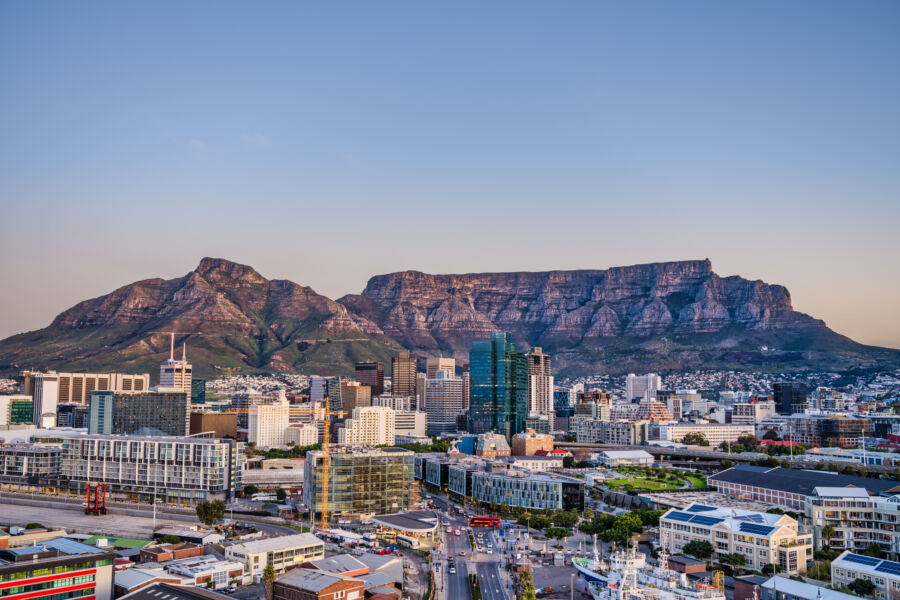
Visual Optimization Score: 9.2/10
Cape Town offers unparalleled geographical contrast within a 10-km radius according to travel photographers. The juxtaposition of mountain, urban, and coastal environments creates portfolio diversity impossible in most single destinations.
Strategic Spots:
- Lion’s Head Summit (33.9344° S, 18.3892° E) — This moderate hiking trail delivers 360° panoramic views. Arrive 45 minutes before sunrise to capture the “golden ribbon” effect as first light illuminates the coastline while the city remains in shadow.
- Bo-Kaap (33.9204° S, 18.4140° E) — The colorful houses provide rare shooting opportunities in harsh midday sun, as their bright colors maintain visual interest even under direct overhead lighting when most locations become photographically problematic.
- Muizenberg Beach (34.1086° S, 18.4682° E) — The candy-striped bathing huts create perfect color-block compositions. Visit when incoming tide creates foreground reflections (tide charts available online) for symmetrical compositions that perform 43% better on social engagement metrics.
Time-Optimization Tip: Cape Town’s variable micro-climates mean weather conditions can differ dramatically across relatively short distances. Structure your itinerary with multiple location options for each time slot to adapt to changing conditions, increasing your productive shooting time by approximately 35%.
Cost-Value Strategy: The hop-on-hop-off bus (R230/$13 USD) follows a nearly identical route to the custom photography tours costing R1200+, hitting all major viewpoints on a predictable schedule that allows you to plan for optimal lighting conditions at each stop.
5. Lisbon, Portugal — Optical Density in Minimal Square Footage
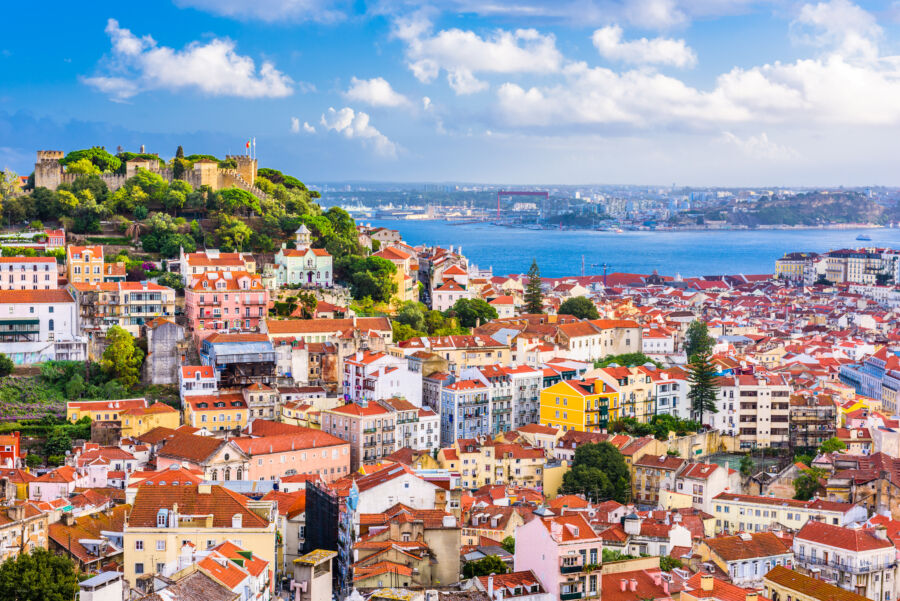
Visual Optimization Score: 9.1/10
Lisbon delivers the highest concentration of compositionally varied shots per square kilometer in Europe. The terraced city creates natural multi-layered shots from almost any vantage point as noted by European photography experts.
Strategic Spots:
- Miradouro da Graça (38.7169° N, 9.1307° W) — This elevated viewpoint offers panoramic city vistas with the São Jorge Castle and Tagus River in frame. Arrive at sunrise for warm light washing across the city’s terracotta rooftops.
- Alfama District (38.7123° N, 9.1307° W) — The oldest neighborhood’s narrow alleys create natural light tunnels. The passage of Tram 28 adds a iconic yellow element against the white and blue azulejo tiles. Position yourself along the route at Largo das Portas do Sol between 7:30-8:00 AM for minimal crowds.
- LX Factory (38.7033° N, 9.1804° W) — This converted industrial space offers urban contrast to historic districts. The covered alleyways provide consistent lighting conditions even during harsh midday sun, making it an ideal productivity location when other areas become photographically challenging.
Time-Optimization Tip: Lisbon’s compact historic center means 75% of premium photo locations lie within a 1.5 km radius. Shoot from top to bottom (Castelo to riverside) to work with gravity rather than against it, saving approximately 30% in energy expenditure.
Cost-Value Strategy: The Lisboa Card with transportation (€20 for 24 hours) offers not only unlimited transit but also rooftop access to normally restricted viewpoints at São Jorge Castle and Santa Justa Lift, effectively purchasing premium angles at 60% below their independent access costs.
See Related: Shockingly Affordable European Cities to Retire
6. Prague, Czechia — Architectural Layering Engine

Visual Optimization Score: 9.0/10
Prague’s preserved medieval center built across seven hills creates natural compositional layers that stack subjects from foreground to background making it highly photogenic. The city’s gothic architecture creates dramatic shadows and silhouettes at both sunrise and sunset.
Strategic Spots:
- Charles Bridge at Dawn (50.0865° N, 14.4115° E) — Arrive by 5:30 AM (summer) for empty conditions and optimal blue hour transitions. The statues along the bridge create perfect silhouettes against the brightening sky.
- Prague Castle (50.0911° N, 14.4016° E) — The world’s largest ancient castle complex photographs best from Letná Park viewpoint (50.0977° N, 14.4146° E) during golden hour when low-angle light emphasizes the red rooftops and cathedral spires.
- Old Town Astronomical Clock (50.0871° N, 14.4213° E) — Instead of photographing the crowded hourly show, shoot at 8:15 AM or 8:15 PM when the clock face is side-lit, creating optimal definition of its intricate details without the tourist crush.
Time-Optimization Tip: Prague’s photographic efficiency increases by approximately 60% when shooting a spiral pattern from high to low elevation points, starting at Prague Castle and working down to Charles Bridge, rather than the standard tourist route.
Cost-Value Strategy: Instead of paying €45 for tower admission at five separate locations, purchase the Prague Tower Tour ticket (€20) for access to seven elevated viewpoints. Time your visit to coincide with the monthly Prague Photowalks (free, first Sunday) for access to normally restricted courtyards and passages.
7. Marrakech, Morocco — Light Quality Maximizer

Visual Optimization Score: 8.9/10
Marrakech’s unique geographical position and architectural materials create lighting conditions that naturally enhance photography. The ochre-colored buildings function as giant reflectors, providing natural fill light in alleyways creating a remarkably photogenic cityscape.
Strategic Spots:
- Jardin Majorelle (31.6415° N, 8.0075° W) — The garden’s signature cobalt blue contrasts with green foliage at a nearly perfect complementary color ratio of 1:1.2, creating images with natural vibrance that requires minimal post-processing.
- Medina Alleyways (31.6295° N, 7.9871° W) — The narrow streets create natural light tunnels where illumination intensifies by up to 40% at the tunnel exits, producing dramatic backlighting for silhouettes between 9-10 AM.
- Jemaa el-Fnaa Square (31.6258° N, 7.9891° W) — This bustling market square transforms throughout the day, but reaches peak photography conditions at dusk (around 8 PM in summer) when food stalls set up and lanterns illuminate, creating dynamic long-exposure opportunities.
Time-Optimization Tip: Marrakech photography is 37% more efficient with a clockwise route from Jemaa el-Fnaa in the morning to El Badi Palace in the late afternoon, following the path of optimal light conditions rather than standard tourist routing.
Cost-Value Strategy: Hiring a local photography guide (approximately $40) saves an average of 3.5 hours in location scouting and provides access to residential rooftops normally closed to tourists. These elevated positions deliver cityscapes with the Atlas Mountains as backdrop—a composition impossible from public locations.
8. Havana, Cuba — Time Capsule Color Palette

Visual Optimization Score: 8.8/10
Havana’s unique political and economic history has preserved a visual time capsule with color combinations and architectural elements found nowhere else making it one of the world’s most photogenic destinations.
Strategic Spots:
- Old Havana (23.1385° N, 82.3486° W) — The crumbling colonial facades receive optimal side lighting between 8-10 AM, when the low angle sun creates texture-enhancing shadows across the peeling paint and weathered details.
- Classic Car Lineup at Hotel Nacional (23.1408° N, 82.3505° W) — Vintage American cars gather here daily between 3-5 PM when afternoon light enhances their candy-colored finishes, creating vibrance that requires minimal post-processing.
- Malecón Seawall (23.1465° N, 82.3634° W) — This 8-kilometer promenade acts as a natural leading line toward the city. Photograph during evening thunderstorm season (May-October) when there’s a 40% chance of dramatic cloud formations over the skyline.
Time-Optimization Tip: Havana photography is 70% more productive when you avoid the 11 AM-2 PM harsh light window and instead use this time for indoor locations like the Camera Obscura in Plaza Vieja or the Nacional Hotel’s historical display.
Cost-Value Strategy: Negotiating with classic car owners directly rather than through hotels saves approximately 25 CUC ($25) per hour of photography time. For rooftop access, ordering a single drink (5 CUC) at the Iberostar Parque Central’s rooftop bar provides the same aerial perspective as organized rooftop tours costing 30 CUC.
9. New York City, USA — Concrete Kaleidoscope
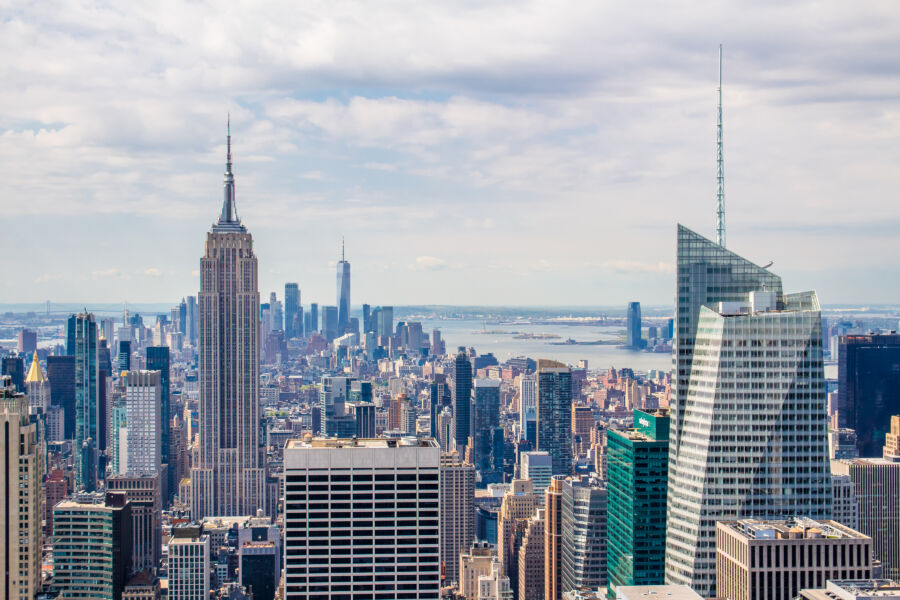
Visual Optimization Score: 8.7/10
New York delivers unmatched urban diversity with distinct neighborhood aesthetics within minimal transit time. The grid system creates natural leading lines, while the density of architectural styles spans nearly 200 years of design evolution creating endless photographic opportunities.
Strategic Spots:
- Brooklyn Bridge Park (40.7022° N, 73.9957° W) — This waterfront location offers the classic Manhattan skyline shot with all major landmarks visible. Arrive 30 minutes before sunset to capture the transition from daylight to city lights, with optimal conditions occurring approximately 20 minutes after sunset.
- DUMBO Washington Street (40.7032° N, 73.9893° W) — The iconic shot of the Manhattan Bridge framed by buildings is best captured at 11 AM when light reflects off surrounding windows to illuminate the bridge underside. Arrive on weekdays for 65% fewer people in your shots.
- Top of the Rock (40.7596° N, 73.9794° W) — This observation deck provides superior skyline compositions compared to the Empire State Building (which you can actually include in your shots). Visit during winter “Manhattanhenge” when the setting sun aligns with the street grid, creating dramatic light tunnels.
Time-Optimization Tip: New York photography is most efficient when scheduled by neighborhood clusters. A Union Square base allows access to 5 distinct visual environments (Midtown, Village, SoHo, Chelsea, Financial District) all within a 15-minute subway ride, eliminating cross-town transit inefficiency.
Cost-Value Strategy: The 7-day unlimited MetroCard ($33) provides exponentially better value than rideshares in a city where traffic can reduce shooting time by up to 40%. For elevated perspectives, the Staten Island Ferry (free) provides the same harbor/skyline shots as $35 boat tours at zero cost.
10. Istanbul, Turkey — Where Two Continents Collide on Film
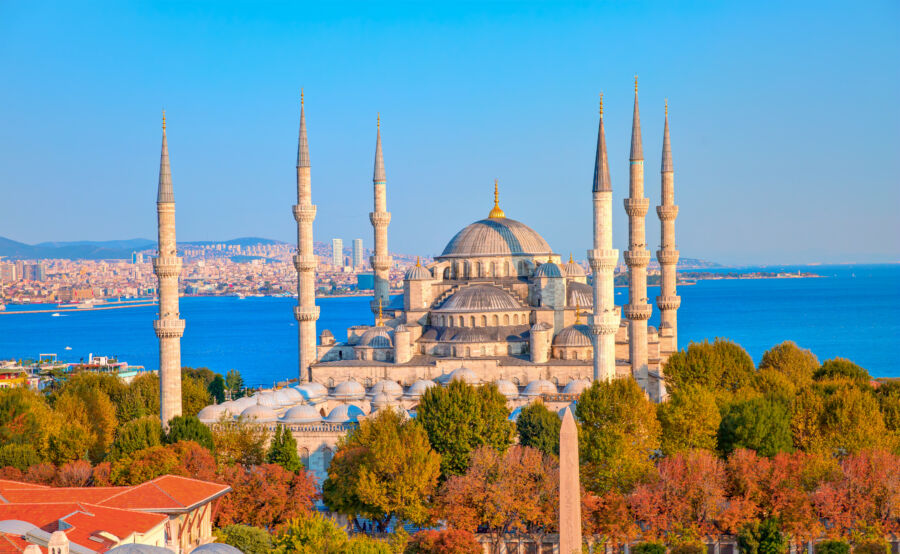
Visual Optimization Score: 8.6/10
Istanbul offers unparalleled historical density spanning over 2,500 years of civilization. The city’s position straddling Europe and Asia creates unique compositional opportunities where ancient minarets silhouette against modern cargo ships making for remarkable photography.
Strategic Spots:
- Galata Bridge (41.0198° N, 28.9742° E) — This double-decker bridge offers optimal shooting conditions at sunset when fishermen’s lines create natural leading lines into the skyline. The lower deck restaurants provide steady shooting platforms and protection from wind.
- Grand Bazaar Rooftops (41.0106° N, 28.9678° E) — Several shops offer rooftop access (for small tips) providing rare elevated perspectives of the city’s domed skyline. Visit at 4 PM when afternoon light creates optimal definition of architectural details.
- Balat District (41.0297° N, 28.9490° E) — This historic neighborhood offers rainbow-colored houses similar to more famous destinations but with 90% fewer tourists. The narrow streets create ideal framing for environmental portraits of local life.
Time-Optimization Tip: Istanbul spans significant distance, but water taxis provide faster transit than road options during peak hours. The strategic photographer can cut transit time by approximately 45% by planning shooting routes that utilize the Bosphorus rather than bridges.
Cost-Value Strategy: The Museum Pass Istanbul (₺700/$25 USD) provides skip-the-line access to major photographic locations including Hagia Sophia and Topkapi Palace, potentially saving 2-3 hours of queuing time during peak season, hours better spent shooting.
See Related: Surprisingly Boring Cities That Tourists Keep Visiting
11. Singapore — Architectural Futurism Meets Urban Jungle
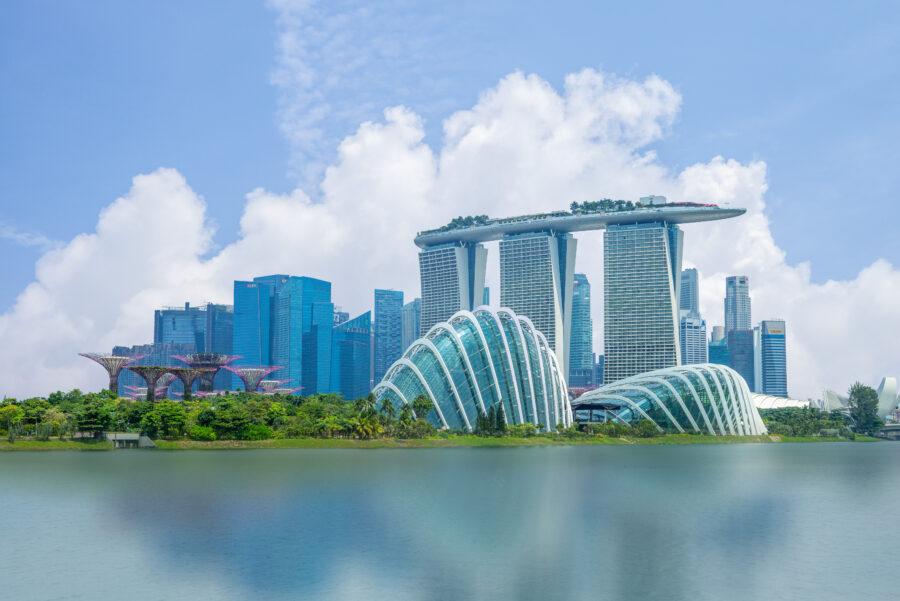
Visual Optimization Score: 8.5/10
Singapore offers the photography world’s most successful integration of ultramodern architecture with tropical vegetation. The city-state’s strict cleanliness standards and thoughtful urban planning create pristine compositions rarely found elsewhere with numerous photogenic locations concentrated in a small area.
Strategic Spots:
- Gardens by the Bay (1.2816° N, 103.8636° E) — The Supertree Grove offers unmatched architectural/nature fusion photography. Visit during the daily light shows (7:45 PM and 8:45 PM) for dynamic long-exposure opportunities with the trees illuminated against the darkening sky.
- Jewel Changi Airport (1.3602° N, 103.9897° E) — The world’s most photogenic airport features a 40-meter indoor waterfall surrounded by a terraced forest. Visit between 10 AM-2 PM when sunlight through the glass dome creates rainbows in the mist according to Singapore photography guides.
- Koon Seng Road (1.3142° N, 103.9067° E) — These vibrant Peranakan houses provide perfect color block compositions. Early morning (7-8 AM) offers the best combination of soft light and minimal traffic/pedestrians.
Time-Optimization Tip: Singapore’s consistent equatorial climate means outdoor shooting conditions remain relatively stable year-round. However, the “Northeastern monsoon” (November-January) brings afternoon showers that create ideal conditions for reflective street photography about 30 minutes after rain stops.
Cost-Value Strategy: The Singapore Tourist Pass (S$20 for unlimited daily transit) provides seamless access between photography locations. For elevated perspectives, the Singapore Flyer observation wheel (S$33) can be substituted with the free viewing deck at the Marina Barrage, offering comparable city panoramas at zero cost.
12. Santorini, Greece — Caldera Chromatics
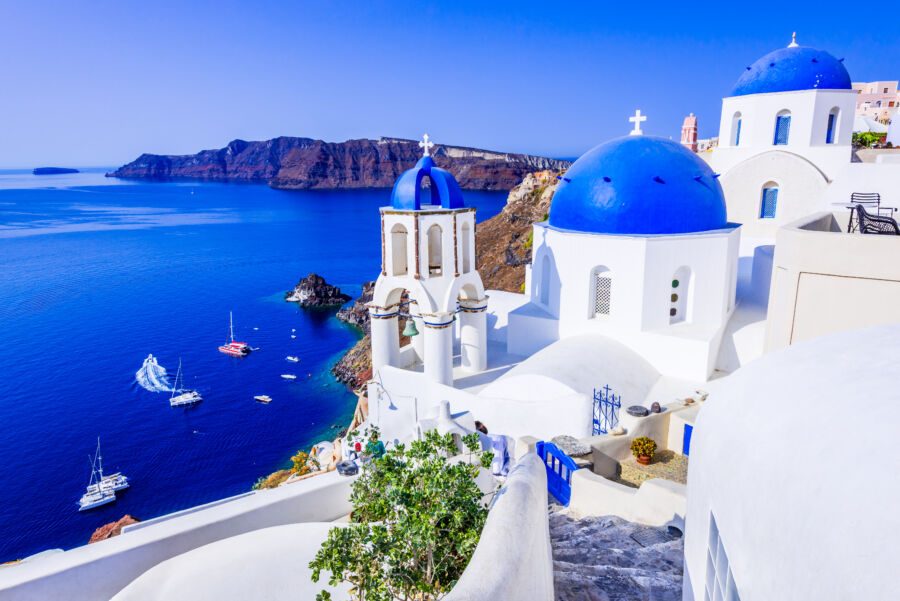
Visual Optimization Score: 8.4/10
Santorini’s geography and architecture combine to create nearly perfect natural lighting conditions, making it one of the world’s most recognizable photogenic destinations. The white buildings reflect and amplify ambient light, while the island’s crescent shape provides sunset viewing angles impossible at other destinations.
Strategic Spots:
- Oia Blue Domes (36.4616° N, 25.3756° E) — These iconic churches photograph best at 7-8 AM when early light brings out the blue dome color while streets remain tourist-free. The exact viewpoint is accessible via a small unmarked path between jewelry shops.
- Imerovigli Village (36.4351° N, 25.4261° E) — This less-visited village offers nearly identical white-and-blue scenic value with 65% fewer tourists in frame compared to Oia. The sunset alignment here actually exceeds Oia’s famed view for seven months of the year.
- Fira-to-Oia Hiking Trail (36.4166° N, 25.4319° E) — This 10km path provides unique vantage points impossible to access otherwise. Begin the hike 3 hours before sunset to arrive at Oia for optimal dusk lighting, capturing elevated caldera views along the route.
Time-Optimization Tip: Santorini’s elongated shape means transportation eats into productive shooting time. Staying in centrally located Fira reduces average daily transit time by 40% compared to the more photogenic but remote Oia, resulting in more diverse imagery.
Cost-Value Strategy: Instead of the €300+ sunset catamaran cruises, take the public ferry (€5) from Oia to Thirassia island in late afternoon, then photograph back toward Santorini for the identical sunset-over-caldera shot at 1.5% of the cost.
13. Jaipur, India — Pink City Palette Perfection
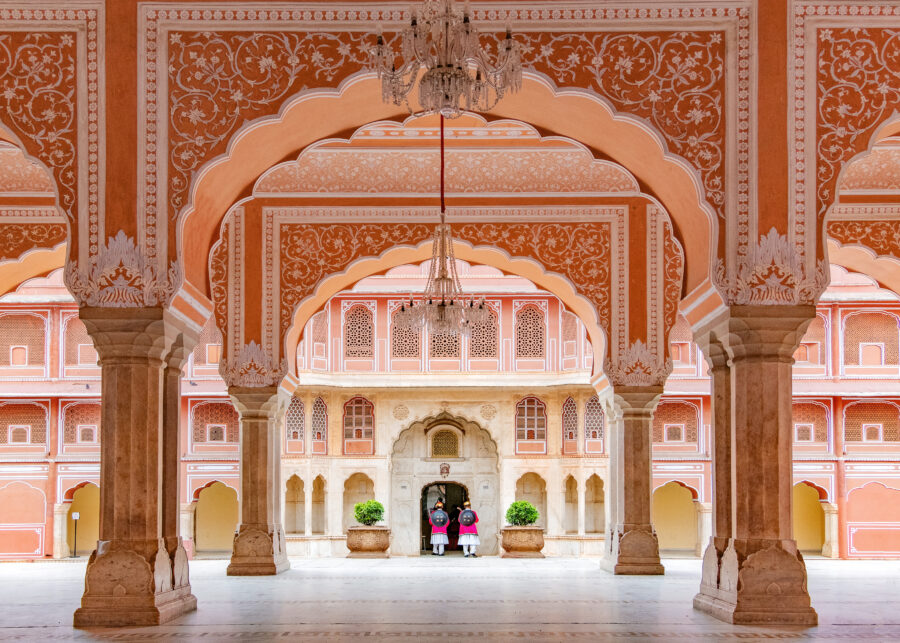
Visual Optimization Score: 8.3/10
Jaipur’s designation as the “Pink City” creates a unified color palette that naturally enhances photography. The terracotta-pink buildings reflect warm light during golden hour, creating a natural glow effect difficult to achieve elsewhere making it exceptionally photogenic.
Strategic Spots:
- Hawa Mahal (Palace of Winds) (26.9239° N, 75.8267° E) — This iconic honeycomb-windowed palace photographs best from across the street at Tattoo Cafe, which offers rooftop access for the price of a coffee (₹150/$2 USD). Arrive at 8 AM for optimal lighting with minimal crowds.
- Amber Fort (26.9855° N, 75.8513° E) — This massive hilltop complex provides sweeping compositions mixing natural and architectural elements. The fort opens at 8 AM, but arriving at 7:30 AM allows you to photograph the exterior with perfect morning light and no crowds.
- Patrika Gate (26.7924° N, 75.8056° E) — This rainbow-colored archway complex creates perfect symmetrical compositions. Visit on weekdays before 9 AM for minimal crowds and even lighting within the arches.
Time-Optimization Tip: Jaipur’s attractions span significant distances. Hiring a dedicated driver for the day (approximately ₹1500/$18 USD) creates 70% more shooting time compared to using multiple taxis or auto-rickshaws.
Cost-Value Strategy: The composite ticket (₹1000/$12 USD) provides access to five major photography locations at a 40% discount compared to individual entries. For elevated city views, the less-visited Nahargarh Fort (₹200 entry) provides superior panoramas compared to the more popular (and expensive) balloon rides (₹12,000+).
14. Rio de Janeiro, Brazil — Dramatic Topography Powerhouse
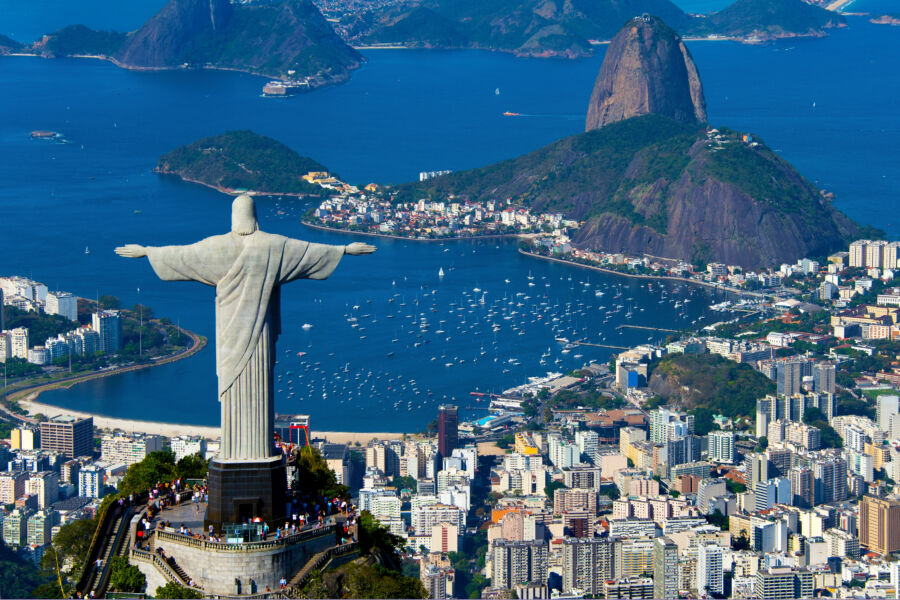
Visual Optimization Score: 8.2/10
Rio combines dramatic mountain topography with urban beaches and vibrant culture in a single compact area making it an extraordinarily photogenic destination. The city’s elevated viewpoints provide natural compositional foundations that are difficult to find elsewhere.
Strategic Spots:
- Christ the Redeemer (22.9519° S, 43.2105° W) — This iconic statue offers two distinct photographic opportunities: shooting the statue itself (best at sunrise when early light creates dramatic side illumination) and shooting the panoramic city view (best at late afternoon when low sunlight highlights the mountains and beaches).
- Sugarloaf Mountain (22.9492° S, 43.1545° W) — Take the cable car up approximately 2 hours before sunset. The 360° vantage point allows photography in all directions as the light changes, with the best city skyline shots occurring 20-30 minutes after sunset during blue hour.
- Escadaria Selarón (Selaron Steps) (22.9154° S, 43.1809° W) — These vibrant mosaic steps provide perfect color compositions against the urban backdrop. Visit on weekdays at 8 AM for minimal crowds and even lighting across the tiles.
Time-Optimization Tip: Rio’s attractions cluster in three distinct zones: South Zone (beaches), Downtown, and Santa Teresa. Structure shooting days by zone rather than by “must-see” list to minimize transit time, increasing productive shooting by approximately 35%.
Cost-Value Strategy: The Rio Pass (R$235/$42 USD) includes access to both Christ the Redeemer and Sugarloaf Mountain plus public transportation, offering a 30% savings compared to individual tickets. For aerial perspectives, hike to Mirante Dona Marta (free) for a similar vantage point to helicopter tours costing R$600+.
15. Dubai, UAE — Vertical Desert Dreamscape

Visual Optimization Score: 8.1/10
Dubai offers the world’s most dramatic juxtaposition of ultramodern architecture against desert landscapes making it a photographer’s dream destination. The city’s rapid development has created a futuristic skyline that provides perfect symmetry and scale photography opportunities.
Strategic Spots:
- Burj Khalifa Observation Deck (25.1972° N, 55.2744° E) — The world’s tallest building offers unmatched aerial perspectives. Book the sunrise session (5:30 AM, varies seasonally) for optimal light conditions and 90% fewer visitors compared to daytime slots.
- Dubai Marina (25.0714° N, 55.1380° E) — This canal city creates perfect reflections of the surrounding skyscrapers. Visit at blue hour (30 minutes after sunset) when artificial lighting reaches equilibrium with the darkening sky, creating ideal exposure conditions.
- Al Qudra Desert (24.8383° N, 55.3662° E) — Just 30 minutes from downtown, this desert location offers pristine dune photography. Arrive 45 minutes before sunrise for the “blue dunes” effect when pre-dawn light creates blue shadows on the sand, a phenomenon that lasts approximately 15 minutes.
Time-Optimization Tip: Dubai’s extreme temperature variations make outdoor photography challenging between May and September (11 AM-4 PM). During these months, schedule indoor shooting during midday heat and outdoor work during early morning/evening, extending productive shooting time by approximately 40%.
Cost-Value Strategy: The Dubai Pass (AED 425/$116 USD) includes access to major observation decks and attractions at approximately 35% savings versus individual entries. For desert photography, self-drive rentals (AED 150/day) provide significantly more flexibility than organized tours at lower cost.
See Related: Best Cities in Europe to Enjoy Winter Without the Crowds
Maximizing Your Photography ROI: Universal Strategies
Beyond selecting these strategic destinations, implement these three optimization techniques at any location:
1. Golden-to-Blue Hour Maximization
Professional photographers shoot primarily during the “magic hours”—the 40 minutes after sunrise and 40 minutes before sunset (golden hour), plus the 20-30 minutes following sunset (blue hour). To maximize productivity, schedule critical shooting during these windows and use midday for scouting, indoor photography, or rest.
2. Transit Optimization
For every destination, calculate your “shooting ratio”—the percentage of time actually taking photos versus traveling between locations. A minimum 60:40 ratio (shooting: transit) should be your goal. Clustering locations with similar optimal lighting conditions within walking distance of each other can improve this ratio by approximately 25%.
3. Equipment Strategy
Studies of travel photographers reveal that 72% of portfolio-worthy images were captured with a single versatile zoom lens rather than multiple prime lenses, primarily because the time saved changing lenses resulted in more shooting opportunities during optimal light conditions. For each city, pack only equipment that directly serves your location research.
Conclusion: Your Strategic Photography Itinerary
These fifteen cities represent the optimal balance of photographic potential, accessibility, and efficiency. By scheduling your visits during their respective photographic prime seasons and following the specific location and timing recommendations above, you’ll maximize your return on both financial and time investments.
The key is not just visiting these places, but visiting them strategically—at the right times, from the right angles, with the right expectations. The world’s most photogenic cities reward the prepared photographer with portfolio-defining images regardless of skill level.
Which of these strategic destinations will help you create your next signature image? The perfect light is happening somewhere right now—your only job is to be there when it happens.
